Free download: Top 10 Natural & Easy Remedies for Joint Pain from Home. Learn these helpful remedies.
Estimated Reading Time: 6 minutes read
It can be unnerving to put stress on your bones through exercise, especially for those with osteopenia or osteoporosis. However, when done correctly, weight-bearing exercises for osteoporosis can be one of the greatest strategies for increasing bone mineral density.
Total bone mass peaks around age 35. Few people know this fact, although many have experienced its effects.
As you age, your bones may become brittle from a loss of calcium. As this loss continues without being addressed, it may lead to osteoporosis.
If you have osteopenia or osteoporosis, putting stress on your bones through exercise may seem unnerving and even counter-intuitive… after all, couldn’t that lead to fractures?
Yes and no.
When done incorrectly, high-impact movements may lead to stress fractures.
However, there are effective strategies for exercising with osteoporosis.
In fact, working out is the exact solution needed to help prevent those very injuries.
But first, how do you know if you’re at risk of brittle bones?
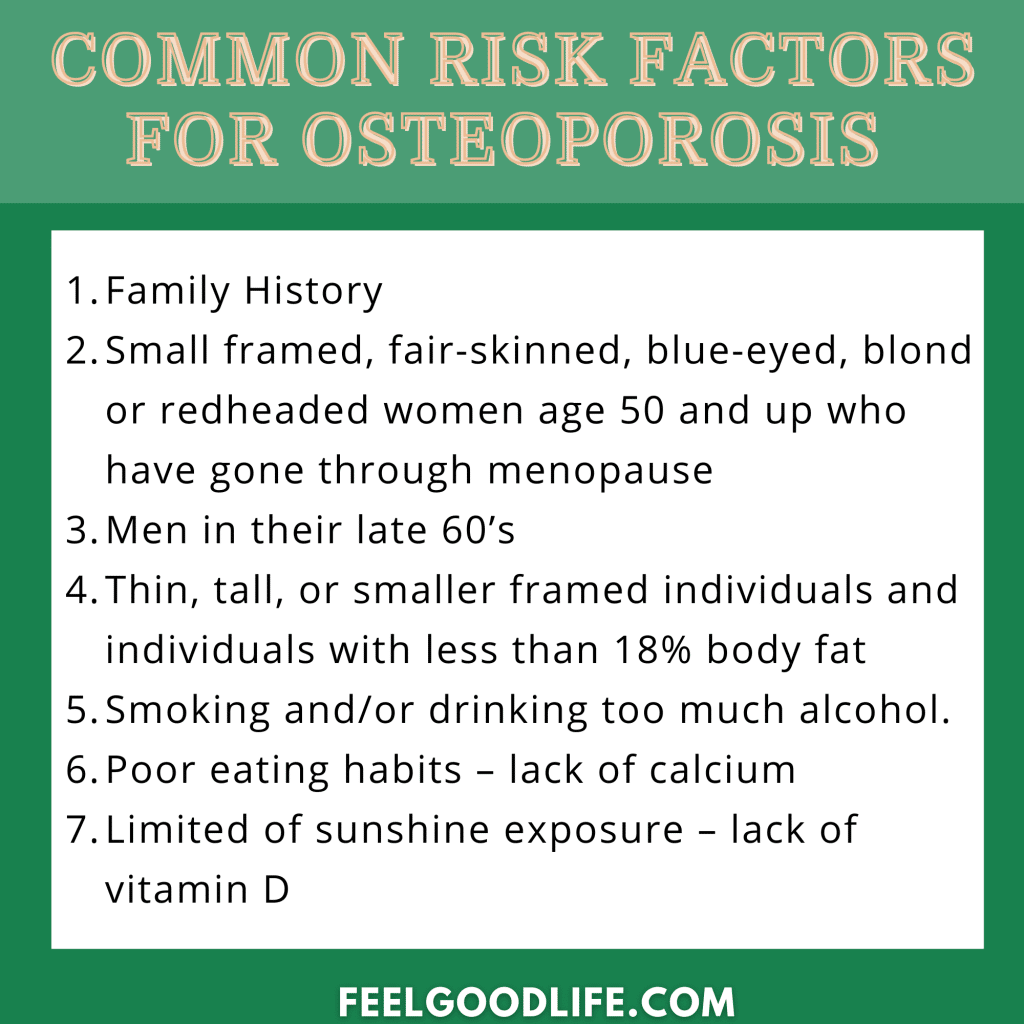
Table of Contents
Why Should You be Exercising?
With those risk factors in mind, there are steps you can take to lessen the severity of osteopenia and osteoporosis.
According to Wolff’s Law, the more stress you put on a muscle the greater resilience created.. the muscle becomes thicker and the bone will remodel itself over time to become stronger to resist that sort of stress.
However, the right kind of stress must be added to your lifestyle.
Resistance training, or performing weight-bearing exercises for osteoporosis, is a great option.
One study found that performing regular weight lifting movements may help to increase and prevent further loss of bone density.
What Exercises Should You Do?
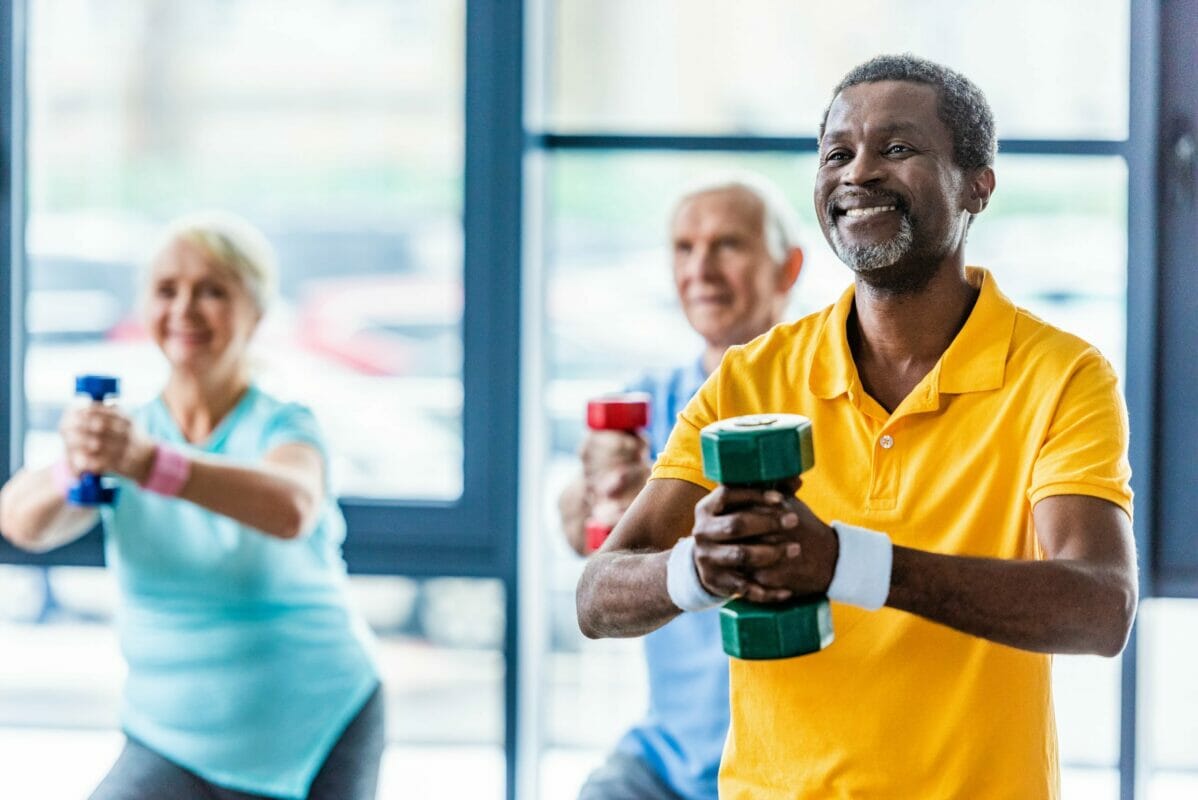
Weight-bearing exercises require your feet and legs to support your body’s weight.
These types of movements include walking, hiking, dancing, stair climbing, and other low-impact aerobics (like the routine below).
Walking as little as 3-5 miles a week can help build up bone strength and health — aim to reach a total of 30 minutes a day, 5-7 days a week.
Certain exercises, however, may aggravate osteopenia and osteoporosis.
If you have osteoporosis, don’t do the following types of exercises:
- High-Impact Exercises.
- Activities such as jumping, running outdoors or on uneven paths, or even jogging on a treadmill can lead to fractures in weakened bones. Avoid jerky, rapid movements in general.
- Bending and Twisting.
- Exercises in which you bend forward at the waist and twist your waist, such as touching your toes or doing sit-ups, can increase your risk of compression fractures in your spine if you have osteoporosis.
- Foam Rolling
- Using a foam roller to massage muscles in your legs may put too much direct pressure on your bones and should be avoided.
Instead, choose exercises with slow, controlled movements. Use the tips below to get started exercising for bone strength.
Tips for Exercising with Osteoporosis

Keep your shoulders done and back, imagining a string pulling from the crown of your head to the ceiling. If this posture is difficult for you, try these postural tips.

No one, especially those with osteopenia or osteoporosis, should exercise through pain. So, make sure to pay attention to your body’s pain signals and stop when it becomes apparent.
Also, knee pain can often be a problem if you try to exercise with osteoporosis. Medical-grade knee sleeves have been shown to help support the knee joint and reduce inflammation to make exercise easier.
Weight-Bearing Exercises for Osteoporosis
The following are some simple, effective, and safe exercise movements to help strengthen your bones and maintain strong bone mineral density in aging adults.
Perform each movement 10 times or for 30-second bouts, for 3-4 rounds total.
1. Posture Squats
Stand in front of a chair and imagine a string tugging from the crown of your head up to the ceiling to maintain good posture.
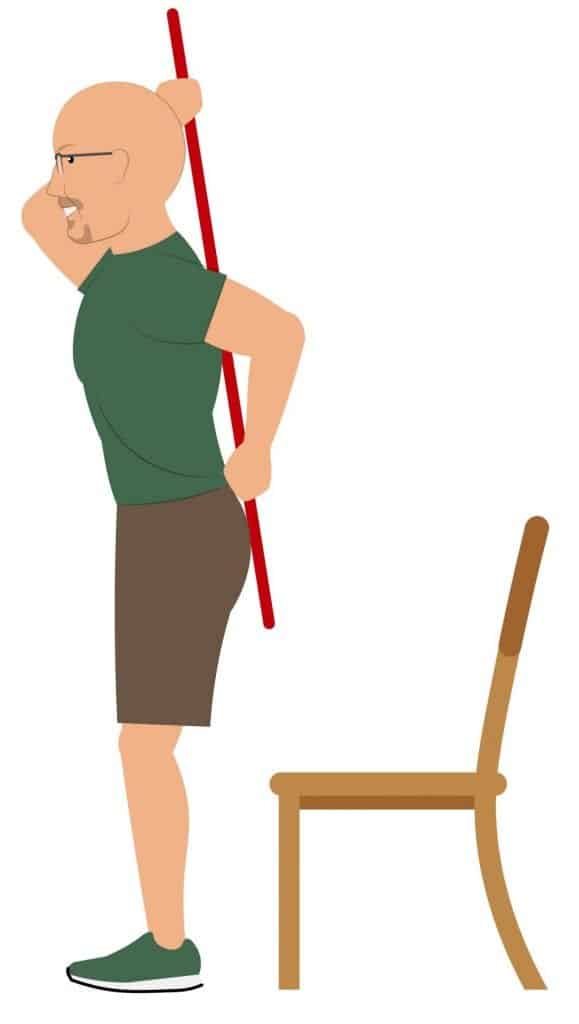
Place a broomstick, long PVC pipe, or wooden dowel lengthwise along your spine, holding one arm above the head and the other behind your low-back.
Gently align the broomstick to these 3 points of contact:
- Head
- Shoulder Blades
- Belt/Top of Your Butt

While maintaining these 3 points of contact, place your feet slightly outside shoulder-width and point your toes out at 45-degree.
Begin to sit down as low as you can while maintaining this posture.
2. Kick Up the Dirt
Using the same broomstick or dowel implement as the previous exercise for balance, stand tall with the broomstick at your right side.
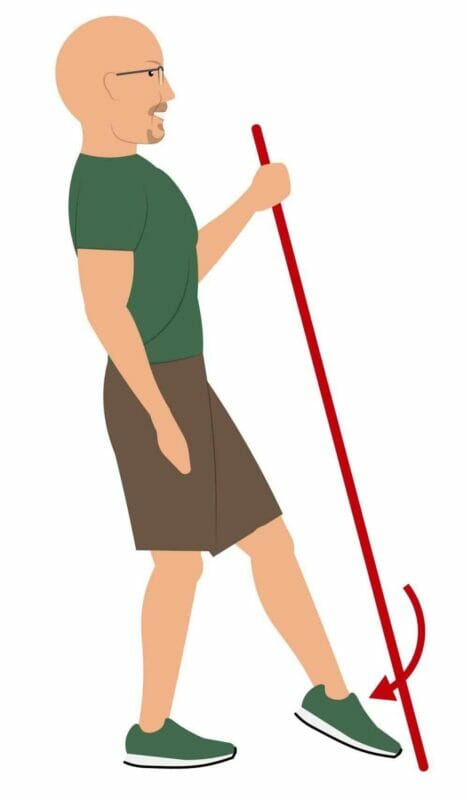
With your left leg, lift and reach forward before tapping the ground and sliding it back to kick your butt behind you.
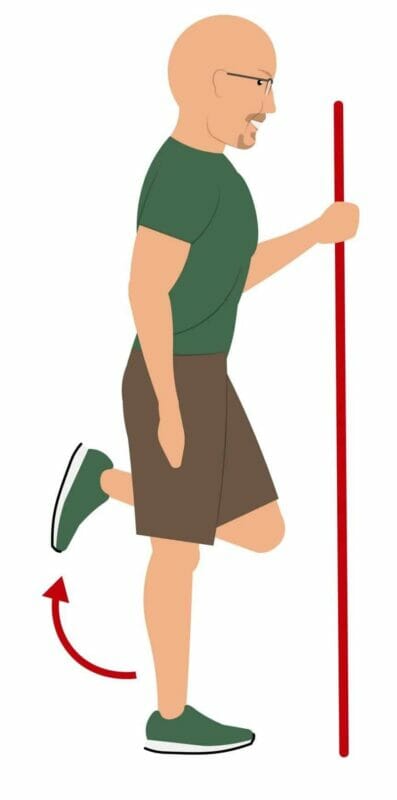
Think of this movement like you are trying to get some gum off the bottom of your shoe.
The gum is stuck to the ball of your foot, so that should be the first thing to touch the ground — with control swipe back and kick towards your butt.
Complete all reps on one leg, then shift the broomstick to the opposite side and perform on the other leg.
3. Wall Plank
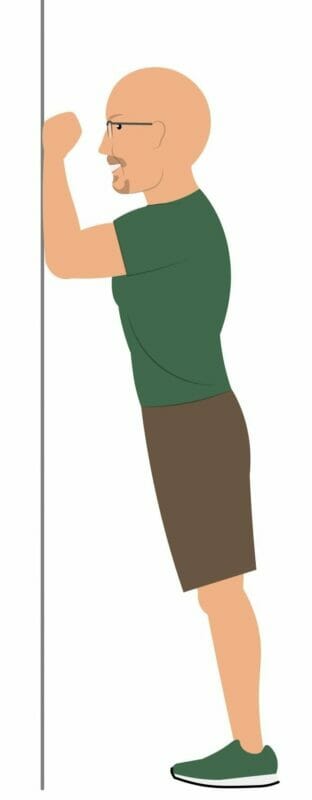
Begin standing tall about 6 inches from a sturdy wall. Place your elbows directly in front of you, about shoulder-width apart.
Step your feet back until most of your weight is in the balls of your feet and you are pressing your forearms against the wall.
Draw your belly button into your spine to engage your core, squeezing your legs to keep your body rigid and in-line.
Hold for the allotted time — if this movement seems easy, progress by stepping the feet back or lowering the elevation from a wall to a table or (eventually) floor.
4. Quick Heel Raises
Standing next to a chair for balance, shift your feet so they are about hip-width apart.
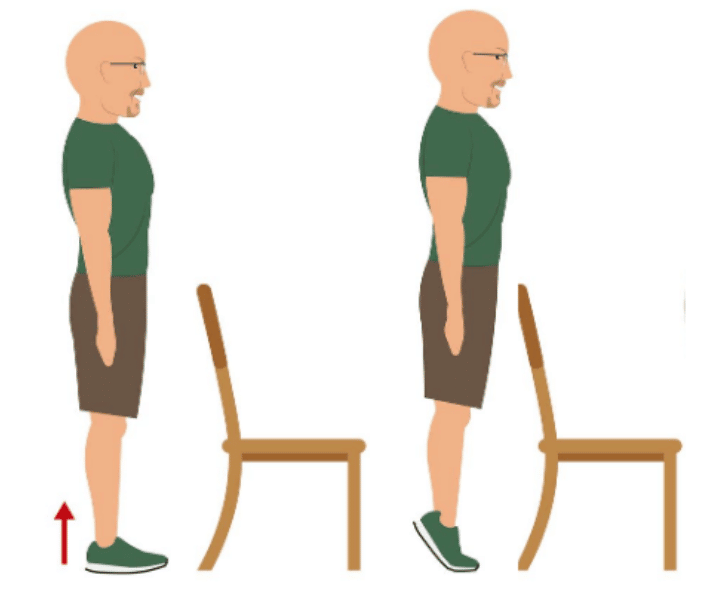
Gently raise your heels, maintaining a good posture and balance, making sure to keep your ankles directly over your toes (don’t let them flare out to the sides).
In a quick, controlled movement, lower and raise your heels in this manner for the allotted reps.
Place your hands on the chair if needed to keep your balance and be able to move quickly.
5. Jogging in Place
Again standing near a chair for balance, place your feet roughly shoulder-width apart like the Posture Squats.
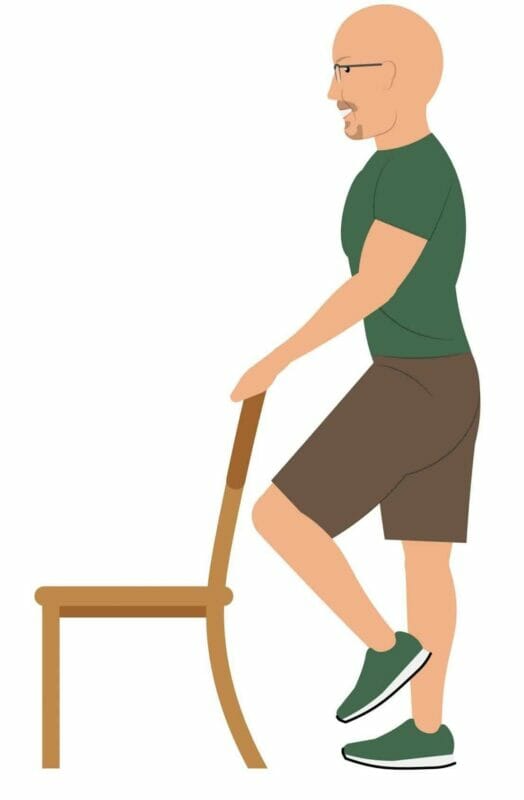
Gently shift your weight from side to side, eventually lifting one foot off the ground at a time in a jogging motion.
Perform this movement for the allotted time, continuing at a gentle pace.
One of the most common joints that tend to cause people the most problems are knees.
Our 5 Minute Feel Good Knees method is perfect for increasing strength, alignment and reducing knee joint pain… and is safe if you have osteoporosis.
Give this routine a try and check out the other workouts that are safe for osteoporosis if you have:


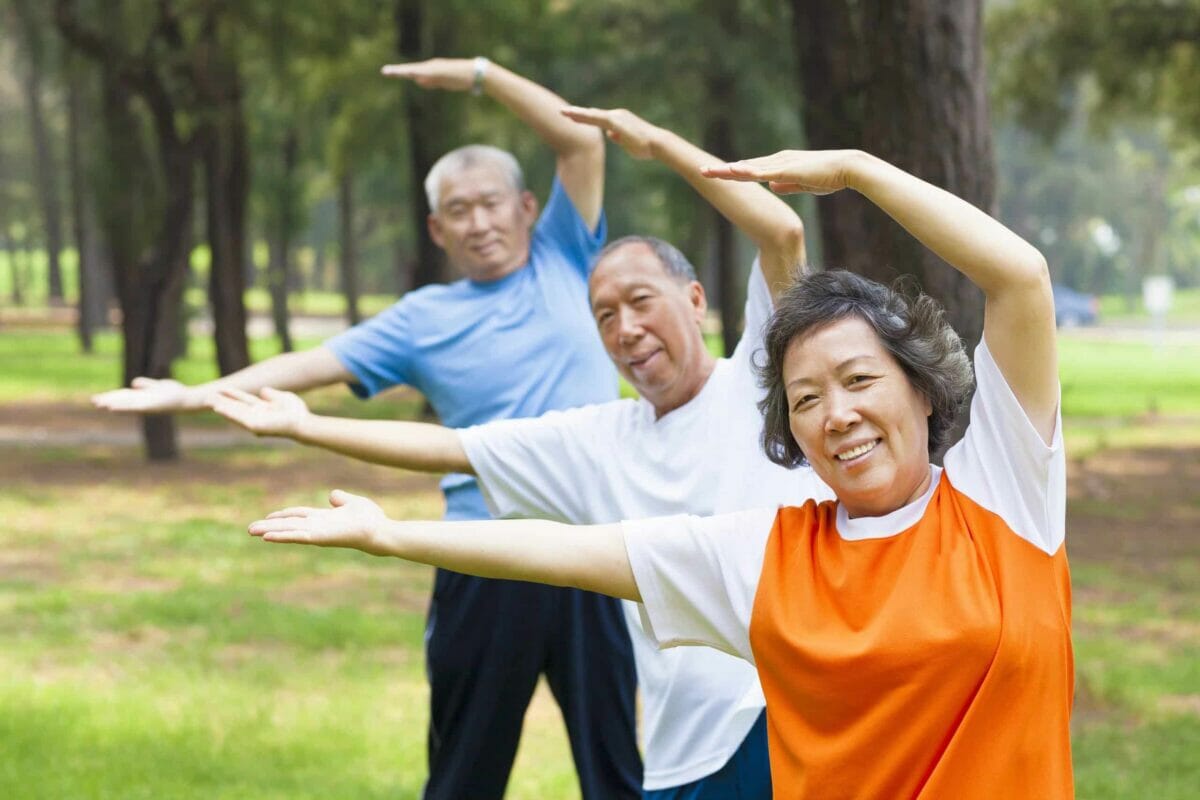







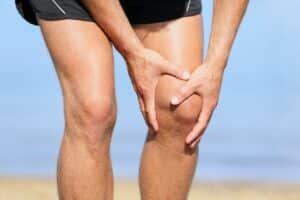
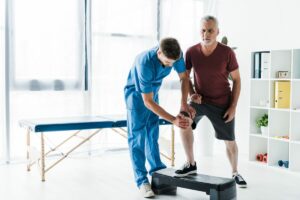
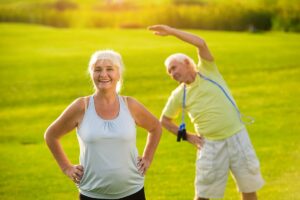
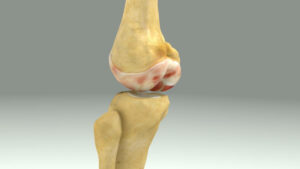
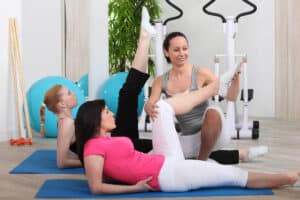

9 Responses
Will these exercises help someone who has had both knees replaced already. Your exercises are great I’ve already been doing some of them already from a brain surgery many years back. I have osteoporosis now so excited to incorporate your exercises. Thank you
Thank you. I began the exercises today.
You're welcome, Margaret! That's awesome. Best of luck to you!
Coach Todd, Of all the would-be helper ads on the internet, yours stand out, because you actually offer helpful tips and exercises without a requirement of an additional amount of money. Oh, I have purchased some of your printed books, but you give even so much more in your daily Informative personable messages. Health, happiness, safety wishes for you and your family as you continue traveling. Thank you, Gail - a senior in CA
Thank you for that Gail! We love to provide value first and hearing that you are enjoying our content is a great reassurance. We also just started a youtube channel if you like watching videos. Here's the link: https://www.youtube.com/c/feelgoodlife?sub_confirmation=1
Coach Todd,your connecting with us,most specially to the vulnerable seniors in a holistic way is very much appreciated.Doing these muscles and joints 3 starting excercises are already wonderfully relieving.Your family photos are also heartwarming.MABUHAY,means Long Live in Pilipino.
Thank you for the kind words Delia! I am so happy to hear that these exercises are helping you!
I recently (ab a month ago) tried to order hard book copies of the knee book and then books for all other joints. I received the knee book but not the ones for all other joints. Can you ck and let me know if they are on the way?
Thank you,
Marilyn Chapple
mkdchapple@gmail.com
512-461-1169
Hi Marilyn! Can you please send an email to my team at todd@feelgoodlife.com. We will look into for you and ship out another copy if needed.